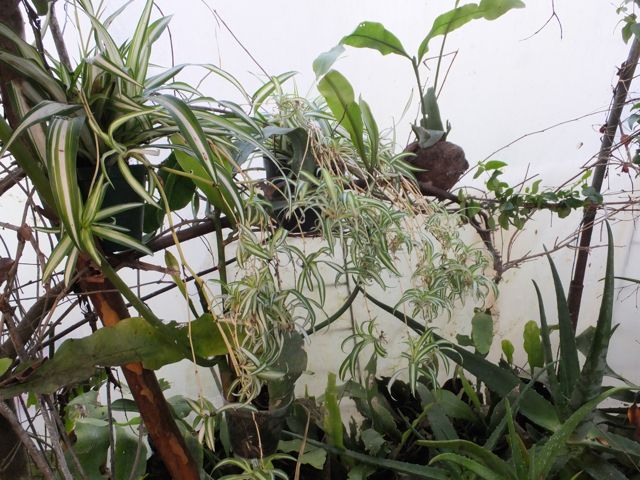Okay, guess, what is a really ornamental foliage plant ideal for greenhouse or conservatory. Definitely attractive, tough as old boots, not prone to pests or diseases, quick to grow, easy to multiply, obliging as to compost, withstands poor watering regimes and will do in any position surviving sun or shade. So robust we usually give it to children and students. Have you got it yet?
A big clue; N.A.S.A. experiments showed this to be one of the most effective plants for cleaning and improving the air in spacecraft. As with any green plant this makes oxygen and absorbs carbon dioxide, but it also absorbs many other vapours and gases that are undesirable in our air, and the huge leaf area removes much dust as well.
This almost magical plant is so common we barely notice it anymore. And I’ll bet you can’t tell me where it comes from? It’s Latin name is Chlorophytum, literally Green Plant, this simple name alone indicates some time since it’s introduction though it has also been called Phalangium and Anthericum.
Now more commonly known everywhere as the Spider plant this comes from the resemblance of the arching stems (scapes) with little tufts of thin leaves to a mass of spiders. Related to lilies Chlorophytum is a small genus of a handful of similar plants from South Africa and Sierra Leone. The original introduction was back in the 1700s if not before and soon became a very popular house and glasshouse plant during the Victorian period, almost rivalling apsidistras, though again little noticed in its ubiquity.

You could grow Chlorphytum elatum / comosum from seed but it is easier to just get an offset from another plant, you must know someone who has one. It is even possible to grow these by root division, but why bother as so many offsets are produced. Oddly these plants do flower though this may also go unnoticed, the arching stems carry sprays of tiny moth like flowers which may set seed but more often turn into yet more little tufts of leaves. One plant literally showering many dozens if not hundreds of them. These can be positioned along and over branches and deadwood to form very attractive displays at almost no cost or effort.
Or, if the slender shoots are kept cut back then the main plant becomes more exuberant and the long narrow leaves become considerably larger getting to two feet or so long. In hot countries and in summer here this makes the plants very attractive for bedding out, especially as huge numbers are easily reared at little cost.
Chlorophytums really do require little care or attention but of course will produce much better and more impressive displays if well treated. In warmer weather syringing the plants freshens them up and always water generously, but keep them dryer through winter.
You may come across some of the other species and there is an all green form which is rare compared to the usual white striped variegated ones. There are also yellow striped forms, and a choice dwarf dark green and yellow variety Mandanum.


